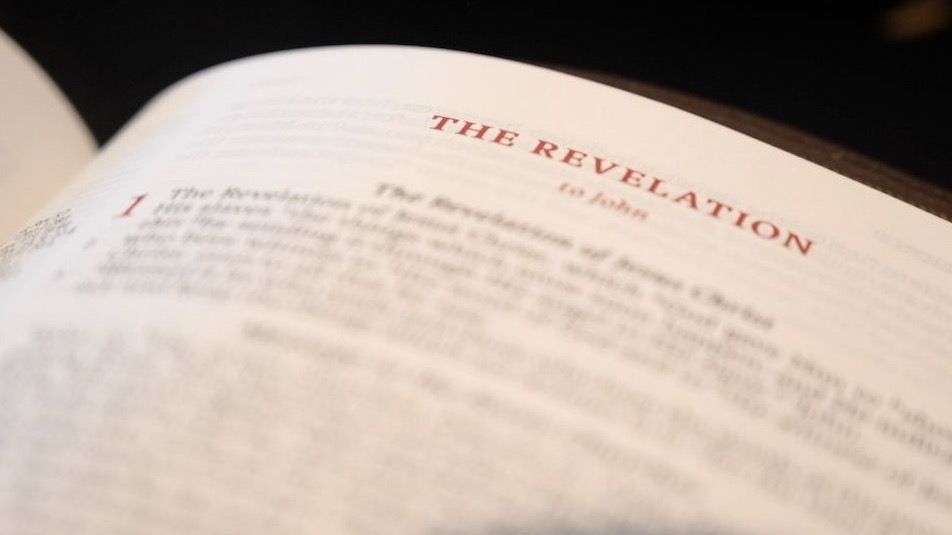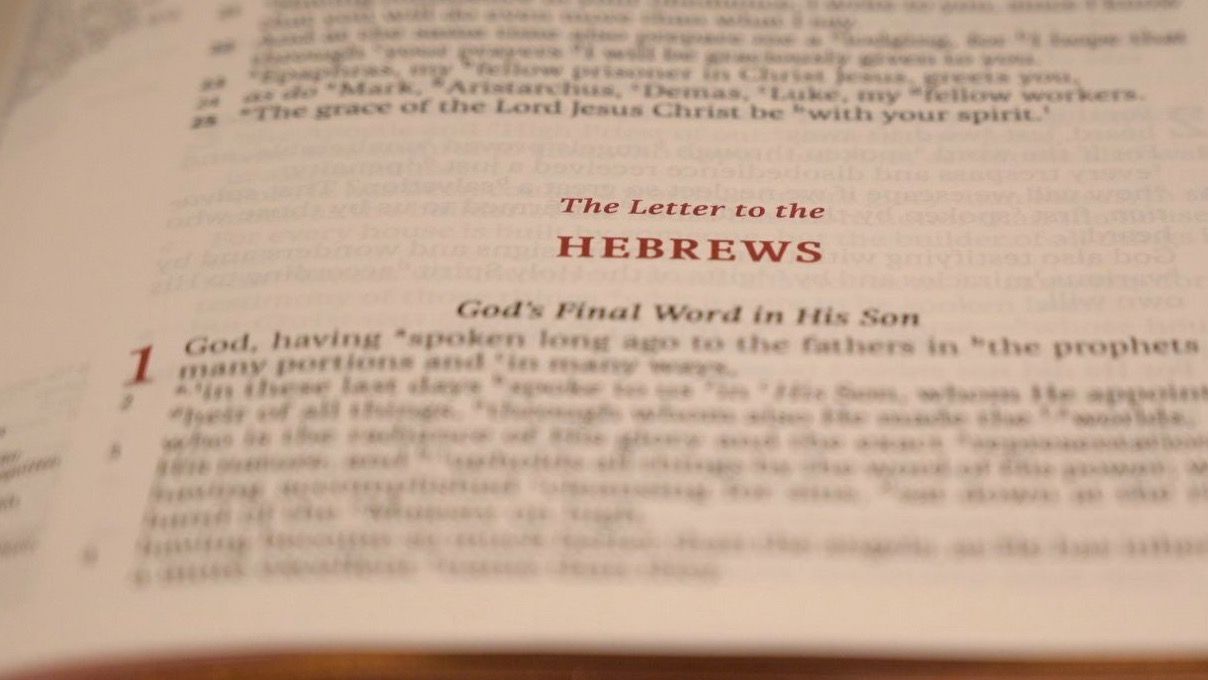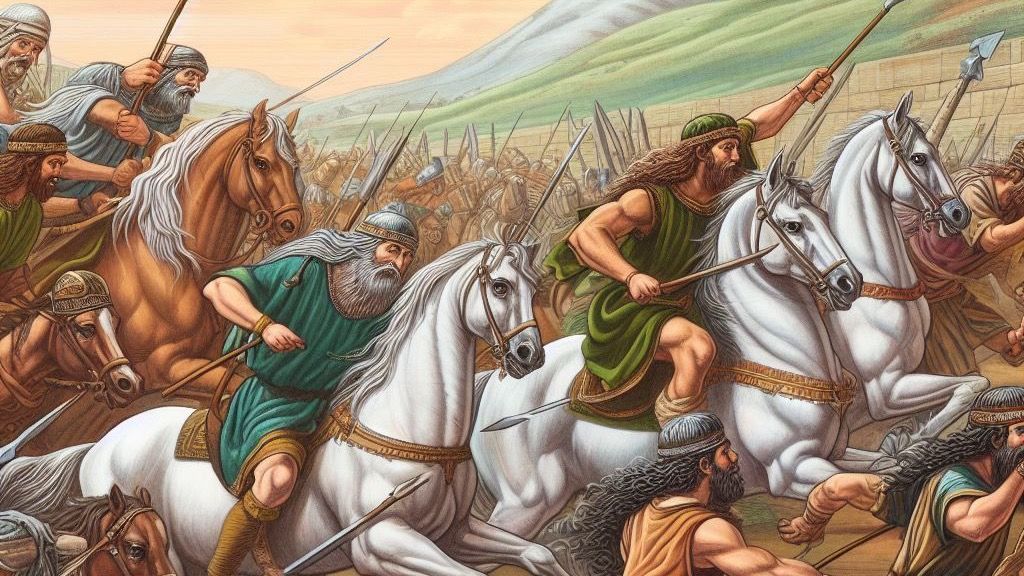Introductory issues concerning Revelation including itsauthorship and date. Review of the preterist, historicist, idealist, and futurist views.
Who are the three major candidates for the authorship of Revelation? Which is most likely?

The author identified himself as "John" (1:1, 4, 9; 22:8), and it is assumed that the name was not a pseudonym. Therefore, there are only three major candidates for authorship. John Mark and John the Baptist have failed to gain any serious support.
John the apostle and son of Zebedee John the elder Some other John who was a prophetThe most likely person who wrote Revelation was John the apostle, the son of Zebedee.
Internal Evidence
First-person account and references indicate the author was an eyewitness in the events in Revelation. By simply referring to himself as "John," he assumed that he was a well-known figure in Asia Minor. The author designates his book as "prophecy" (1:3; 22:7, 11, 18–19). The author refers to himself as "servant" (doulos), "brother" (adelphos), and "partner" (synkoinonos). Many commentators believe the linguistic and stylistic cluses within the text suggest that John was a Jewish Christian from Palestine.[1]External Evidence
Early testimony that John the apostle was the author include the following: Justin Martyr (ca. AD 100–165), Irenaeus (ca. AD 130–200), Clement of Alexandria (ca. AD 150–215), Hippolytus (ca. AD 170–236), Origen (ca. AD 185–254), and Tertullian (ca. AD 160–225).What are the two major alternatives for the time of Revelation's composition?[2]
There are two major alternatives for the date of composition: an early date (AD 64–69) and a late date (AD 95–96).
Internal Evidence
Persecution of the churches of Asia Minor: Nero or Domitian? Spiritual condition of these churches: Ephesus forsook their "first love", false teaching in Pergamum and Thyatira, spiritual lethargy in Sardis, and the lukewarmness in Laodicea. The Emperor cult: suggests Domatian since he gave himself titles of divinity. Reference to the Jerusalem temple in 11:1–2: a literal interpretation may suggest Revelation was written before the destruction of the Jerusalem temple in AD 70. Late date is possible if the temple is symbolic or a reference to a reconstituted temple in Jerusalem (Ezekiel 40–48). "Nero redivivus myth": Roman historians suggest a myth existed that many believed Nero did not die by suicide in AD 68 but would return alive to conquer Rome. Domitian had the reputation of being the second Nero. References to "Babylon": If "Babylon" is equated with Rome, it suggests a post-70 dating for Revelation since both empires, Babylon and Rome, destroyed the temple of Jerusalem (Rome in AD 70). Seven "heads" (17:9–11): The sixth king representing the current reigning Roman emperor at the time of composition may have been Nero (if Julius Caesar is first) or Galba (AD 68–69, if Augustus is the first emperor).External Evidence
Early church tradition supports the time of Domitian including Irenaeus (informed by Polycarp, a disciple of John), Clement of Alexandria, Origen, Eusebius (ca. AD 260–340), and Jerome (ca. AD 354–420). Eusebius accepted Irenaeus's testionomy, asserting that Revelation was written in the fourteenth year of Domitian's reign.The external evidence (established tradition throughout church history) overwhelmingly favors the late date. The internal evidence is not as strong but also seems to favor a later date.
Therefore, the book of Revelation was likely written around AD 95–96 by John the apostle, having been banished from Ephesus by a provincial governor on the isle of Patmos.
What were the occasion and purpose of the book of Revelation?
John, commanded by God (1:11, 19) wrote the book of Revelation to Christians in seven churches located along a postal route in Asia Minor. John's vision occurred during a time when these churched needed encouragement to remain faithful amidst hardship. John addressed each church directly (chap 2–3) to address their unique situation and issues. Speaking the words of Jesus, John wrote Revelation to cleanse the churches from false teaching and deter them from losing hope in Jesus who will return to establish His kingdom.
The dominant culture was Greco-Roman paganism, while Christians were tenacious monotheists who refused to participate in the imperial cult. This cult functioned politically to show loyalty to the emperor. In John's vision, there will come a time when all inhabitants of the earth will be required to worship a ruler. Revelation condemns all forms of idolatry and commands exclusive worship of God alone.
As one who experienced unjust exile, John also wrote Revelation to encourage believers to hold steadfast their faith against a corrupt justice system.
Define apocalypse. What are some of its accompanying traits?
Apocalypse refers to a particular genre of literature written between 200 BC and AD 200.[3]
"Apocalpyse" is a genre of revelatory literature with a narrative framework, in which a revelation is mediated by an otherworldly being to a human recipient, disclosing a transcendent reality which is both temporal, insofar as it envisages eschatological salvation, and spatial, insofar as it involves another, supernatural world.[4]
A subsequent study group added that an apocalypse is "intended to interpret present, earthly circumstances in light of the supernatural world and of the future, and to influence the understanding and behavior of the audience by means of divine authority."[5]
Elements of Apocalyptic Literature
A visionary means of communication that reveals heavenly or spiritual reality through the agency of a prophet. Literature that is saturated with symbolic, figurative, and metaphorical language. Symbolic imagery and metaphors may express historical, contemporary, or future events in cosmic terms. Genre that expresses the dualism between earthly and heavenly realities with eschatological significance. Seen in the Olivet Discourse (Matthew 24–25; Mark 13; Luke 21:5–32), various NT letters, the book of Hebrews, and 2 Peter 3.How many visions are recorded in Revelation, and what phrase indicates a new vision?
There is a diversity of opinions on how to describe the structure of the book of Revelation. Many agree that there is a prologue (1:1–8) and an epilogue (22:6–21). There are four visions marked by the phrase "in the Spirit" (1:10; 4:2; 17:3; 21:10).
The four major visions are as follows:
The glorified Christ investigates his churches (1:10–3:22) The divine court proceedings and the trial of the nations (4:1–16:21) The sentencing and destruction of Babylon (17:1–21:8) The vindication and reward of believers in the new heaven and new earth. (21:9–22:4)What are the three primary theories of relating the seals, trumpets, and bowls in Revelation?
There are three primary theories for the relationship among the seals, trumpets, and bowls.
Chronological succession: The series of sevens are in strict chronological order without any overlap. Recapitulation: Each septet (seven) represents an intensification and closer look at the same material. The trumpets cover the same occurrences as the seals, and the bowls signify the same period as the seals and trumpets. Telescopic progression: Also known as "dove-tailing," the seventh seal contains the seven trumpets. The seventh trumpet comprises the seven bowls. It attempts to show connection/overlap while accounting for progression with each new septet.Interludes occur. One interlude emerges between the sixth and seventh seal (7:1–17), and another between the sixth and seventh trumpet (10:1–11:14). A third interlude, the "signs" narrative, occurs after the seventh trumpet before the seven bowls.
What are four primary approaches to the study of the book of Revelation?
The four primary approaches to the study of Revelation are preterist, historicist, idealist, and futurist.
1. Preterist
The preterist approach is also known as the "contemporary historical" approach which sees the events prophesied in Revelation were fulfilled in the first century. It is a popular viewpoint today.
It takes seriously the historically conditioned reception of the original audience. This approach looks at Revelation not as a blueprint for the distant future but a commentary on contemporary events at the time of its composition.
However, it's difficult to deny the reality that Revelation depicts the final consummation of the kingdom of God on earth with the physcial return of Jesus, the resurrection of all humanity, and the final judgment. Also, to equate Jerusalem with Babylon seems implusible as Babylon is described as having global political power and control, something historical Jerusalem did not possess.
2. Historicist
The historicist approach was popular during the Middle Ages and the Protestant Reformation. Historicist viewed the book as forecasting the history of Europe with emphasis on popes, kings, and wars. They commonly equated the Vatican (Roman Catholic church) with Babylon. This view narrowly focuses on Western history and does NOT consider the book's relevance to the original readers of the first-century.
3. Idealist
The idealist approach does not look at Revelation as describing events in the "space-time continuum." Instead, it looks at Revelation portraying the spiritual and timeless nature of the battle between good and evil. This view began with Origen in Alexandria and continued with Augustine.
This approach accounts for the symbolic nature of John's visions, but it disregards any historical connections or future expectations. It also dismisses the reality that John had written to seven real churches facing real, historical circumstances.
4. Futurist
The futurist approach looks at Revelation 4–22 referring to future events. Early Christian writers like Justin Martyr, Ireneaus, Tertullian, and Hippolytus (ca. AD 170–236) held to this futurist view (chiliasm) and a literal 1,000 year reign of Christ.
This approach was not largely abandoned until the late 16th century, and today, it is widely held by many evangelical Christians. There are two distinct understandings today.
Dispensational futurism: This view holds to a commitment to the literal interpretation of prophetic Scripture. "When the plain sense of Scripture makes common sense, seek no other sense." Dispensationalism makes a strict and consistent distinction between Israel and the church. The church is a parenthesis inserted between God's dealings with Israel. Therefore, the book of Revelation focuses on the future of ethnic and national Israel. Modified or moderate futurism: This view is commonly associated with historical premillennialism (G.E. Ladd). Instead of holding to a pretribulational rapture, modified futurists affirm only one return of Christ to earth that allows the church to persevere through the tribulation. Ladd interprets chapters 1–3 pertaining to the first century, chapters 4–6 as church history, and chapters 7 referring to the future tribulation.There are some that incorporate some or all four of these approaches into an eclectic blend. In the final analysis, since Revelation describes what appears to be future events around the return of Christ, some form of a futurist approach should be considered.
What contributions does Revelation make to the canon?
The worship of God and of Jesus Christ (chap 4) The revelation of the future by the Lamb who was slain. (5:1–7) The need for uncompromising faithfulness to Christ through patient endurance. The vindication of God's righteousness (theodicy) and of believers who suffer persecution by the hands of the unbelieving world (chaps. 6–18) The glorious return of Jesus as the supreme King and Lord (19:11–16) The millennial reign of Christ, the defeat of Satan, and the Great White Throne judgment (chap. 20) The restoration of all things in the new heaven and the new earth (chaps 21–22)Andreas J. Köstenberger, L. Scott Kellum, and Charles L. Quarles, The Cradle, the Cross, and the Crown: An Introduction to the New Testament, 2nd ed (Nashville, TN: B & H Publishing Group, 2016), 930. ??
Köstenberger, Kellum, and Quarles, 933–943. ??
Köstenberger, Kellum, and Quarles, 951. ??
J.J. Collins, "Introduction: Towards the Morphology of a Genre," Sem 14 (1979): 9. ??
Köstenberger, Kellum, and Quarles, 952. ??
















